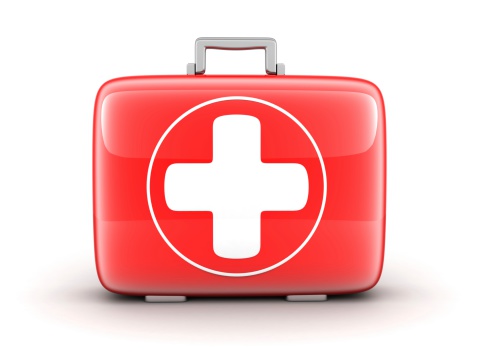First aid 101

According to the American College of Emergency Physicians (ACEP), you can protect your family and reduce your risk of injuries and serious illness by being prepared, and that includes knowing basic first aid.
If you are unlucky and suffer a minor cut, remember these three C’s:
- Control the bleeding.
- Clean the wound.
- Cover the wound.
Dr. Sharon Moy, a family medicine physician at Advocate Medical Group with offices in Normal and El Paso, Ill., recommends controling the bleeding by applying gentle pressure with a cloth or bandage to the wound. Once the bleeding has ceased, Dr. Moy says that you can clean the wound with warm water, being careful not to irritate the wound with soap.
“I recommend that everyone keep an antibiotic ointment in their household first aid kit,” says Dr. Moy. “Once you have cleaned the wound, apply antibiotic ointment and then cover with a Band-Aid or gauze taped in place.”
Most minor injuries can be treated at home. Dr. Moy cautions, however, that you should seek advice from a physician if:
- You can’t stop the bleeding.
- The wound covers a large area, is deep, or you can see tendons or bones.
- The wound was caused by a dirty or rusty object.
- The wound doesn’t heal within a couple of weeks or you notice drainage, redness, swelling or odor coming from the wound, which can be signs of infection.
- You start experiencing fever and chills.
“I recommend a tetanus shot booster if your wound is deep or dirty and your last tetanus shot was more than five years ago,” says Dr. Moy. “Get the booster as soon as possible after the injury.”
Bruising is a common skin injury, also known as a contusion. Dr. Moy recommends applying a cold compress or ice pack for 20 to 30 minutes as an at-home remedy. She advises not to apply the ice pack directly to the skin, wrapping in a towel instead.
Dr. Moy also recommends elevating the bruised area, if possible. And she says to take acetaminophen or ibuprofen for pain, as needed. After 48 hours, she advises, the bruise can now be treated with heat, such as a warm washcloth being applied to the bruise for 10 minutes.
“Treatment for bruising is most effective if done right after the injury occurs,” Dr. Moy says. “Seek medical care if the bruise is accompanied by swelling and severe pain or the bruise does not improve in two weeks.”
Dr. Moy also says that if bruises occur often or are unexplained, you should consult your physician as there may be an underlying condition.
“While cuts and bruises can’t always be avoided, it is important to be prepared,” Dr. Moy says.
“All households should keep a supply of bandages, Band-Aids, antibiotic ointment and ice packs.”
Related Posts
Comments
One Comment
About the Author
health enews staff is a group of experienced writers from our Advocate Health Care and Aurora Health Care sites, which also includes freelance or intern writers.


















These are great tips on how to use a first aid kit if you suffer with a minor cut or injury.